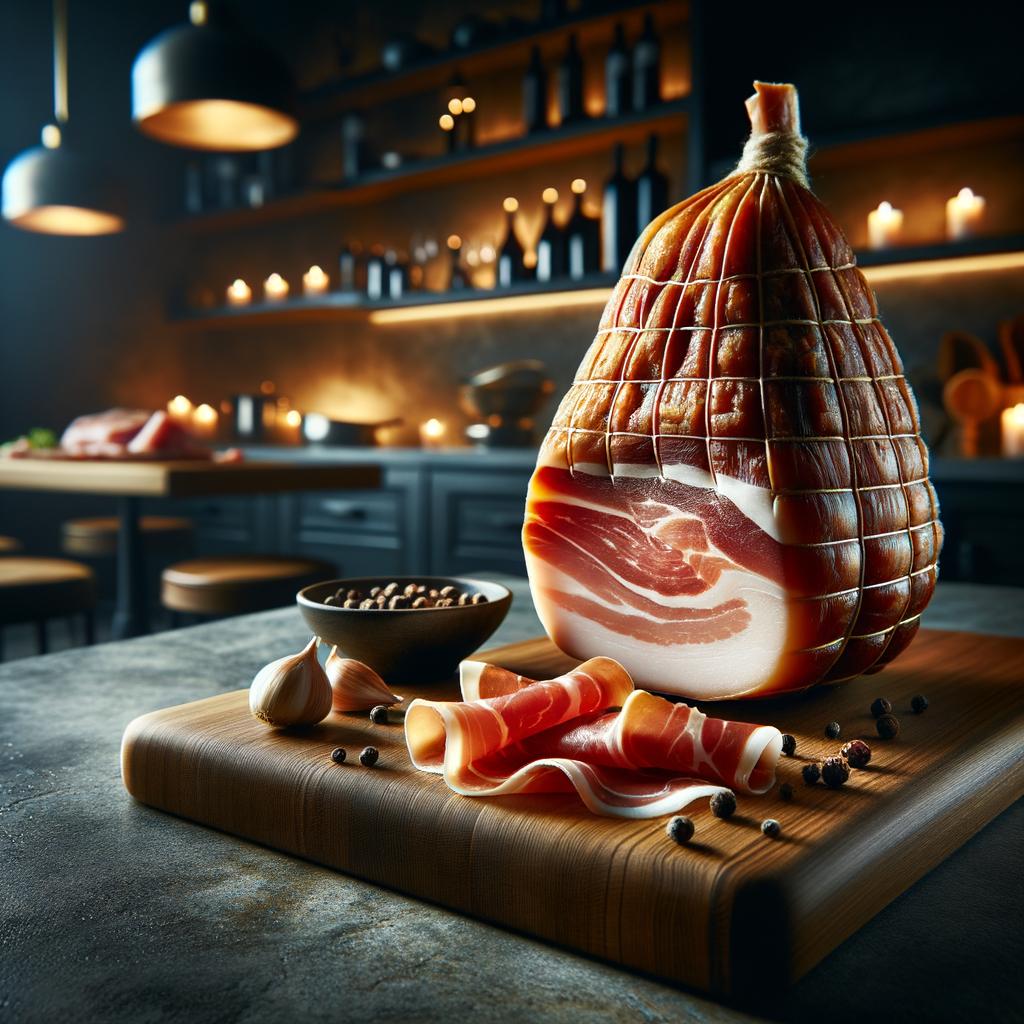Pancetta

Description
Pancetta, the Italian answer to bacon, is a delicacy that exudes a unique blend of sweetness and saltiness. This ingredient is a type of salumi, dry-cured pork belly that is beautifully marbled with layers of fat and lean meat. Its appearance is a feast for the eyes, with a warm, honeyed hue interspersed with creamy white fat. The texture is firm yet tender, and the flavor profile is robust, salty, and subtly sweet, with a hint of peppery spice that sets it apart from its American counterpart, bacon.
Primary Uses
In the realm of cooking, Pancetta is a versatile ingredient that adds depth to a plethora of dishes. It is commonly used in traditional Italian cuisine as a base for sauces, stews, and pasta dishes like Bucatini all'Amatriciana or Carbonara. Its rich, savory flavor enhances the overall taste of the dish, making it a key component in many recipes. Pancetta also finds its place in gourmet sandwiches, salads, and as a topping on pizzas. In non-culinary uses, it is often enjoyed on its own or with cheese and wine in antipasto platters, showcasing its cultural significance in Italian gastronomy.
History
The history of Pancetta is intertwined with the culinary history of Italy. Originating in the Emilia-Romagna region, it was a way for Italians to preserve pork and utilize every part of the animal. The process of making Pancetta, which involves curing the pork belly with salt and spices, then rolling it and leaving it to dry, dates back to ancient Roman times. Over the centuries, this ingredient has become a staple in Italian cuisine and has gained popularity worldwide. There's a romantic tale that in medieval times, a slice of Pancetta was often given as a dowry to the husband-to-be, symbolizing wealth and prosperity.
Nutritional Information
Pancetta is a good source of protein, providing essential amino acids necessary for bodily functions. It also contains vitamins B1, B2, B3, B5, B6, and B12, and minerals like zinc, iron, and selenium. However, due to its high sodium and saturated fat content, it should be consumed in moderation. When compared to similar ingredients like bacon, Pancetta has a slightly higher fat content, but it also tends to be less processed, making it a somewhat healthier option. As always, a balanced diet is key to maintaining good health, and Pancetta can be a part of that when enjoyed responsibly.

